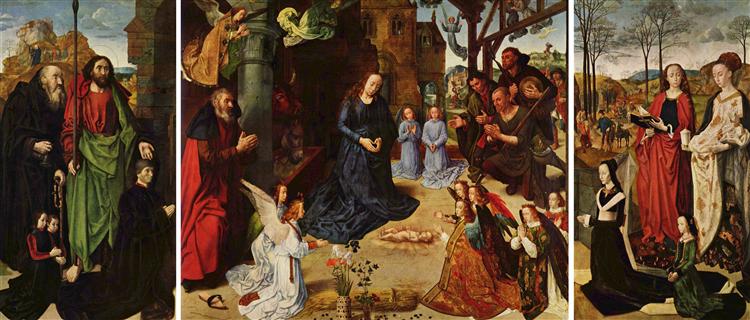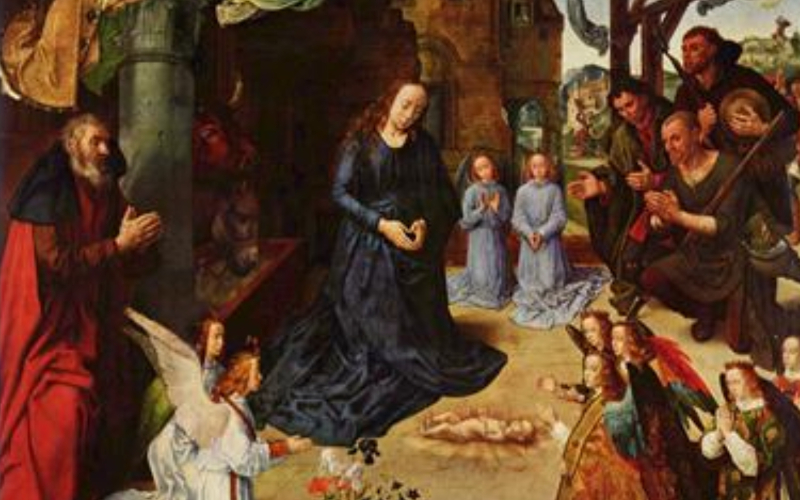Hugo van der Goes, a Flemish artist, painted a triptych in oil on wood called the Portinari Altarpiece or Portinari Triptych (about 1475) that depicts the Adoration of the Shepherds.
It is currently housed in Florence, Italy’s Galleria degli Uffizi and measures 253 x 304 cm.

The Italian financier Tommaso Portinari, a direct descendant of the hospital’s founder, commissioned the piece for the church of Santa Maria Nuova Hospital in Florence. Portinari worked as a bank representative for the Medici family for more than 40 years while residing in Bruges.
With his two sons Antonio and Pigello, Portinari is pictured on the left panel. His wife Maria di Francesco Baroncelli is pictured with their daughter Margarita on the right panel.
Saint Thomas (with the spear), Saint Anthony (with the bell), Mary Magdalen (with the jar of ointment), and Saint Margaret are all accompanied by their patron saints, with the exception of Pigello (with the book and the dragon).
Three shepherds bow down before the infant Jesus in the panel’s center. These rural figures were painted by Van der Goes in a very lifelike manner. The Child, who is not in a crib but rather lies on the ground encircled by an aureole of golden rays, is surrounded by kneeling angels.
This strange depiction of Jesus being adored is most likely based on one of Saint Bridget of Sweden’s visions.
Van der Goes depicted scenes that were related to the primary subject in the background: on the right panel, the Three Magi are traveling to Bethlehem; on the left panel, Joseph and Mary are traveling to Bethlehem; and on the middle panel (to the right), the shepherds are being visited by an angel.
The piece was installed in the Portinari family chapel when it arrived in Florence in 1483, where it was greatly praised by the local painters, many of whom tried to imitate it.
A noteworthy illustration is Domenico Ghirlandaio’s Adoration of the Shepherds (1485), which may be found in Florence’s Sassetti Chapel in the cathedral of Santa Trinita. However, Andrea Mantegna’s Adoration of the Shepherds (Metropolitan Museum, New York), which was created around 1450, already features a naturalistic portrayal of the shepherds.


